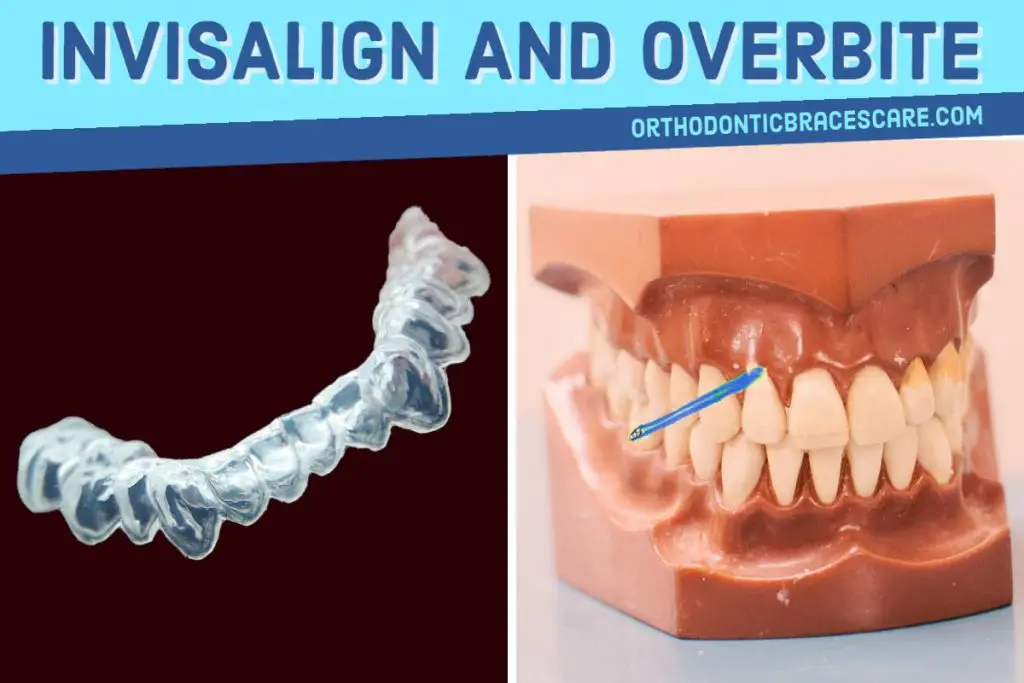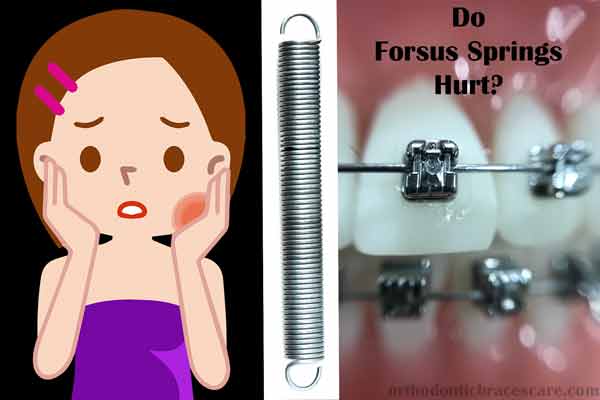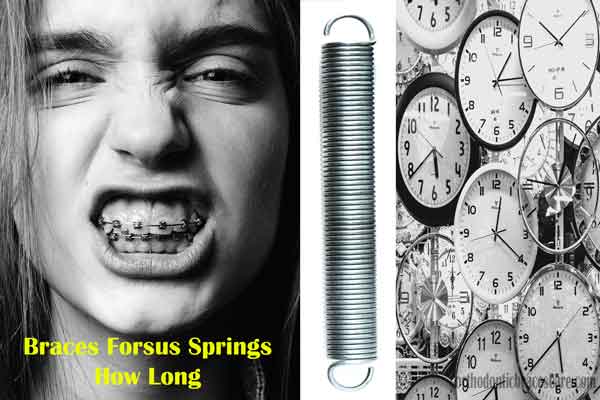When your teeth are misaligned, you want to get a solution such as Invisalign that can give them comfort and a pleasant appearance. So, you also ask, can Invisalign fix an overbite?
Invisalign clear aligners can fix almost any kind of overbite or deep bite just like the braces. As it provides facilities like attachments, buttons, precision cuts, or elastics, it can also correct severe bites problems nowadays. However, when you have an excessive deep bite or the problem is with the jaw bone, you may need other treatment options such as braces, extraction, or surgery.
Now, you may wonder, how can that simple-looking clear aligner fix the overbite?
How long does it take to fix an overbite with Invisalign? What trouble do you have to face to deal with it?
Here, you will get all of your answers regarding Invisalign clear aligners for overbite treatment.
You can also check out other options to fix an overbite.
How does Invisalign fix an overbite?
Invisalign puts pressure on the teeth to create a movement similar to braces. But, it’s a little bit different.
First of all, you need to know what’s Invisalign and how they are installed in your mouth.
These are clear aligners or trays made of plastic. During your appointment with him, he examines your teeth position and overall mouth condition properly.
Now, the dentist uses Invisalign 3D technology to design the treatment plan. He takes an x-ray and an impression to plan the treatment.
During the analysis period, he not only plans to fix the overbite but also correct all orthodontic problems.
After that, he makes the Invisalign according to the plan. Then, you get the first set of Invisalign.
You have to use the aligners for 2 weeks. After that, you get a new set of aligners.
But, how does Invisalign work for overbite?
Fixing overbite needs different techniques depending upon the age and severity of cases.
In growing children
Growing age (around 12 years or younger) is the best time to fix an overbite. If the patient visits a dentist during this period, he uses a special device to correct the bite and malocclusion of teeth.
The name of the appliance is Invisalign Mandibular Advancement. The dentist uses the growth of the child by applying this variety of Invisalign to fix the bite.
In this method, he controls the growth of the jaw bone and therefore fixes the overbite.
In teens and adults
When growth is completed, Invisalign mandibular advancement isn’t effective.
So, teens or after the age of 13-14, the patient need other methods to treat the overbite.
Just like rubber bands used for braces to correct the overbite, teens, and adults get elastic bands with the Invisalign.
One end of the elastic is placed on the upper Invisalign and the other and to the lower Invisalign to a certain area.
This helps move lower teeth forward and upper teeth back. You have to wear it for a certain period every day as your dentist suggests.
Eventually, it reduces the overbite and gives you straighten your teeth.
In severe overbite
Now, Invisalign can fix severe overbite similar to the braces. You need a special attachment for the Invisalign to do that, called a motion appliance.
This device is nothing but a small type of bar which is attached to your upper teeth. You get the elastic bands as well in this technique to correct the overbite.
Steps to fix overbite with Invisalign
Here are the steps to correct overbite with Invisalign clear aligner.
Putting an ideal force on front teeth
The clear aligner and its attachment push your upper teeth backward as well as other teeth which are needed to be corrected.
During correcting an overbite, your top front teeth feel a force while you wear them. This puts pressure on the bones that hold those teeth.
Changing the structure inside the jaw bone
Supporting bones that hold the upper front teeth change their structure when they feel the pressure.
Because of the pressure and the structural changes, you feel pain during the first few days after getting Invisalign.
This chemical reaction creates a path for the teeth. As the pressure is applied backward, the path is created in the back of the teeth.
Moving the teeth backward
Due to the pressure and path created by the bone, teeth start to move in that direction and straighten your teeth.
Straightening of the front teeth and fixing the overbite
The dentist will change the Invisalign every two weeks. It’s necessary because one set of aligners can only shift the teeth to a certain limit.
Every set of aligners shift the teeth back and make them more and more straight. Finally, at the end of treatment, you will have straight upper front teeth and overbite will come within the ideal range.
How long does it take to fix an overbite with Invisalign?
Invisalign can take an average of 6 to 20 months to fix an overbite. This time is required as it’s necessary to correct all the associated orthodontic problems along with overbite.
However, the duration depends on the type of cases, the amount of the overbite, the discipline of the patient, and other factors while wearing Invisalign clear aligners.
If you don’t maintain the aligners correctly or don’t wear them for 22 to 23 hours a day, it can take longer to complete the treatment.
When can Invisalign fix an overbite?
An overbite can correct the following cases.
Mild to moderate overbite cases
A clear aligner can fix mild to a moderate overbite or deep bite completely just like the braces.
Class 2 overbite
It can treat class 2 overbite or malocclusion where top teeth are more protruded than bottom teeth.
Some severe overbite
Because of the invention of attachments, elastics, and precious cuts, Invisalign can correct many severe cases.
Factors that influence the Invisalign treatment to fix an overbite
Here are some important factors on which overbite correction with Invisalign depends.
Age
Growing children can get quicker results and better outcomes from the treatment. So, it’s important to detect the bite problem at an early age.
However, an adult can also fix the overbite and get straighten teeth because of modern technology. But, it may take a little bit longer duration.
Complexity of case
When overbite is severe and/or it’s associated with other orthodontic problems, it needs more time and effort to solve the problem.
Amount of overbite
When the amount of overbite is less number, it can be fixed easily whereas when it’s more in number, it needs more time and works to be performed.
Why should you consider Invisalign for overbite?
Here are some advantages of using Invisalign for overbite for which you can consider getting the treatment.
Natural appearance
Invisalign is less noticeable as it’s clear. So, it gives you natural look as usual.
Comfortable
The clear aligner is made of plastic. So, it’s comfortable to use. Unlike braces, there is no change of mouth getting rubber or poked by the metal complements. People also experience less pain with it.
Removable
The dentist doesn’t fix it on your teeth. That means you can remove it on your own. So, if you have any uncomfortable situation, you can remove it just like a retainer.
You can also remove it when you have a special event to attend. However, if you do it frequently, it won’t be effective. So, wear it regularly.
Easy to use
You can use it easily. Clean it simply with lukewarm water or get a solution online to clean it.
Better lifestyle
You don’t have to change your tooth-cleaning habit and diet like braces. Remove it while eating and cleaning teeth. You can take any food while using it.
Easy to maintain hygiene
You can brush and floss your teeth normally with Invisalign. It doesn’t need any special technique like braces.
However, you should be more careful about your oral hygiene with the aligner.
How much does Invisalign cost to fix an overbite?
On average Invisalign, the clear aligner may cost from $3000-$7000 to fix an overbite and misaligned teeth, according to the Invisalign website.
If you have dental insurance that covers orthodontic treatment, the cost will be less.
But, it depends on the Orthodontic insurance and country.
When should you not go for other treatment options to correct overbite?
You may choose other treatment options in case of the following condition:
1. Some severe overbite with misaligned teeth
If you have an excessive overbite and complicated malocclusion like rotated teeth, Invisalign may not be helpful for those cases. In that case, you can go with braces.
2. Skeletal overbite
Skeletal overbite is a situation when you have a problem with the jaw bone. Some patient’s bottom jaws are shorter or underdeveloped whereas some patient’s tops jaws are bigger or overdeveloped than normal.
One of these conditions or both can be responsible for your overbite. Invisalign clear aligners can’t help you in this case.
Either you need jaw surgery or braces. In growing children, we can prevent it from using a headgear as it’s related to growth problems.
3. Esthetic isn’t a prime concern
If you have no problems with your appearance and other option is good for you, you should go for that without any doubt.
Alternatives to Invisalign
If you want to take a look at the other possible alternative to Invisalign for fixing the overbite, here are some options for you.
Orthodontic Braces
Braces are the most popular option to correct an overbite. You can get braces treatment to correct any kind of orthodontic treatment.
It is effective because there are various components of braces that help the treatment make it more effective.
It can also give you a faster outcome in some cases.
Another important fact is it can move a tooth in any direction. Braces can give you a better result if you have a severe overbite and you don’t want surgery.
Know the difference between Braces and Invisalign for an overbite.
Orthognathic surgery
When your overbite is critical due to the problem with the growth of the jaw bone, Invisalign can’t be so effective.
In that case, you need surgery to correct the position of the jaw bone. After the surgery, you may or may not need orthodontic treatment.
If you need treatment after the surgery, you can go with Invisalign if your dentist suggests.
Headgears and jaw expanders
This option is for growing children. During the growing age, when a dentist predicts the excess overbite, he can fix it with the help of a device, called headgear.
Headgear stimulates or holds the growth of the jaw bone and corrects or prevents the overbite. On the other hand, jaw expanders widen the upper arch when it’s narrow.
This creates spaces for teeth to fix bite problems. Keep in mind that it’s very important to get the treatment of overbite at an early age to get the best result.
Takeaways
Invisalign clear aligners can correct the overbites by putting pressure on teeth and moving them backward gradually.
On average Invisalign can fix the overbite and other orthodontic problems within 1 to 2 years. These aligners can be helpful in many cases.
But, you may not get them if you have excessive overbite or problems with jawbones.
Pallab Kishore is a certified dentist and the owner of Orthodontic Braces Care.
He completed BDS in 2014. Now, he is an MS resident in Orthodontics, BSMMU. He likes content writing and has 12+ years of experience in blogging.



